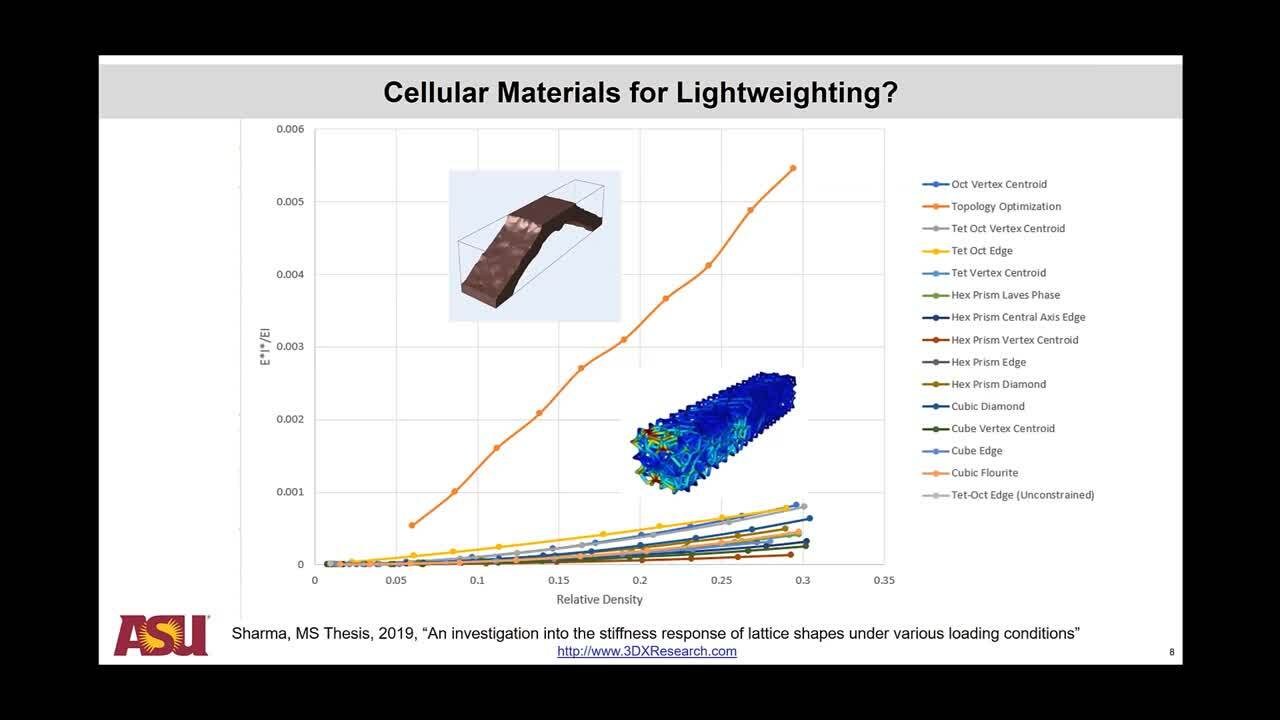Lightweighting with cellular materials: Insights from nature

video: Lightweighting with cellular materials: Insights from nature
Published on August 25, 2020
Dhruv Bhate, Arizona State University
Traditional approaches to lightweighting have involved material selection, consolidation, and topology optimization. Cellular materials such as lattices and foams are typically not thought of as leading design candidates for lightweighting. In this presentation I attempt to understand why this is so, and examine three performance objectives under which their candidacy is strengthened: surface and volume infilling, multi-functionality, and damage tolerance. To demonstrate these arguments, I draw insights from structures in nature that do embody cellular materials, like honeycomb, bone and bird beaks, and extract four design principles: discretization, periodicity, gradients, and hierarchy. Finally, I explore the connections between these principles and the prior performance objectives, demonstrating how we have used nTop to study some of these relationships.
Key takeaways:
- There are different approaches to lightweighting - cellular materials constitute a legitimate approach in the context of infilling, multi-functionality, and damage tolerance.
- Design strategies for cellular materials can be formulated on the basis of four principles reflected in natural structure: discretization, periodicity, gradients and hierarchy.
- nTop, with its equation based implicit modeling approach, is ideally suited for a deep exploration of these relationships, with laser powder bed fusion and other additive manufacturing techniques well positioned for their realization.




